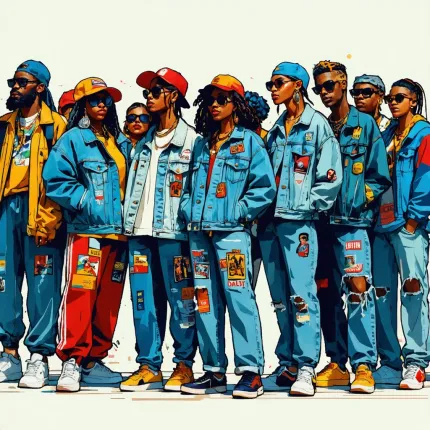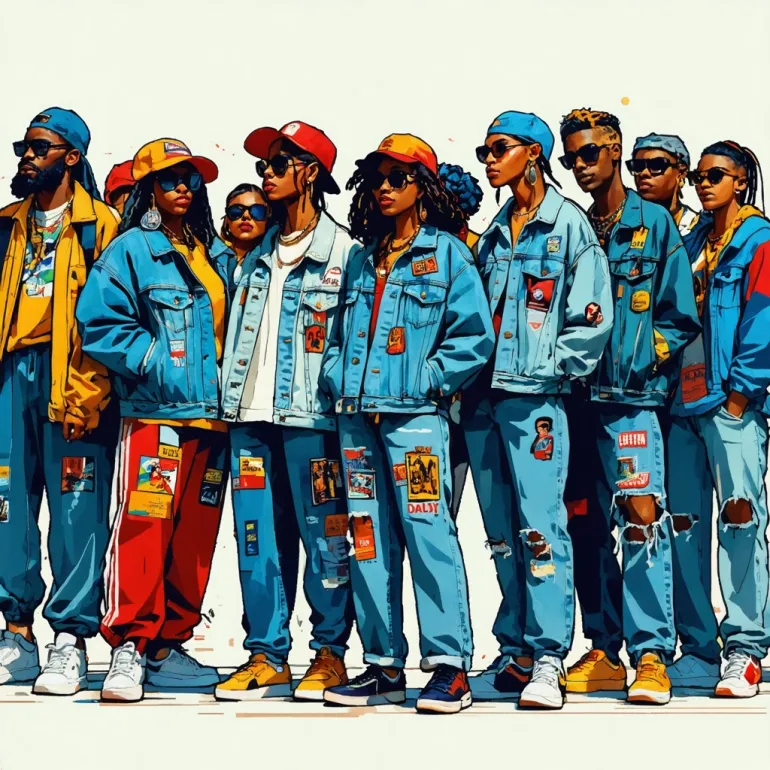Why Are Gen X Brands Making a Comeback Now?
Remember the days of cassette tapes, grunge music blasting from bulky Walkmans, and neon windbreakers? For many, the 90s weren’t just a decade—they were an identity. Nowadays, the unmistakable charm of that era is flooding back, but not just as a mere fad. Gen X brands, which once defined the tastes and lifestyles of the generation born roughly between 1965 and 1980, are capitalizing on this wave of 90s nostalgia to reconnect with an audience that’s craving more than just a fleeting memory. This resurgence is not just about revisiting old logos or rerunning classic sitcoms; it’s a deliberate, savvy move by gen x fashion brands, gen x gym chains, and even gen x radio stations to rekindle a genuine emotional bond with their original fans—now adults with disposable income and a yearning for authenticity.
But here’s the challenge: How do these brands, many of which faded into obscurity or evolved beyond recognition, recapture the hearts of a generation that’s seen it all? And what makes this particular nostalgia wave different from the countless retro revivals before it?
The Lingering Pull of the 90s: More Than Just a Trend
To understand the magnetic pull of gen x brands today, it helps to look at what makes the 90s so uniquely sticky in our collective memory. This era was a perfect storm of cultural shifts—grunge gave way to pop, indie films gained cult status, and the internet began weaving its web. Gen X was the generation caught in the middle, balancing analog innocence with digital dawn, making its cultural footprint distinct and deeply personal.
Consider gen x fashion brands from that time: oversized denim jackets, bucket hats, and minimalist sneakers weren’t just clothes—they were statements. They spoke of rebellion, comfort, and a subtle coolness that never shouted but always stood out. Today’s resurgence of these styles—sometimes with a modern twist—isn’t just about looking back; it’s about reclaiming a sense of identity and simplicity lost in today’s hyper-digital world.
In the fitness world, gen x gym brands that once thrived on memberships fueled by VHS workout tapes and neon-lit aerobics studios are now reimagining themselves. They blend nostalgia with modern wellness trends, appealing to those who remember sweating it out to Jane Fonda videos but now prefer a boutique spin or tech-integrated fitness experience. This blend of old and new feels like a warm invitation to reconnect with a past self who was both active and hopeful.
Gen X Radio: The Soundtrack of a Generation Returns
And then there’s gen x radio—a medium that once served as the heartbeat of youth culture. The crackling voices and curated playlists of 90s alternative rock, hip-hop, and pop not only shaped musical tastes but also created communities. Today, many gen x radio stations are tapping into this nostalgia by reviving classic shows, reintroducing iconic DJs, and creating podcasts that dive deep into the stories behind the music and culture of that era. For listeners, it’s more than just sound; it’s an auditory time machine transporting them back to simpler, formative times.
How Gen X Brands Are Reconnecting With Their Audience
The strategy behind this gen x brand renaissance is as fascinating as the nostalgia itself. It’s not about slavishly copying the past but about weaving those cherished memories into contemporary experiences. Here’s how these brands are doing it:
- Authentic Storytelling: Brands are sharing their origins and evolution transparently, reminding fans of their shared journey.
- Modernized Classics: From revamped fashion lines to updated gym experiences, the old favorites are being reimagined for today’s sensibilities.
- Community Building: Events, social media groups, and interactive content create spaces where fans can relive and celebrate their 90s memories together.
- Cross-Generational Appeal: While deeply rooted in Gen X culture, many brands are smartly engaging younger generations curious about the era’s style and ethos.
These moves are not just marketing ploys—they’re genuine attempts to honor a generation’s legacy while inviting fresh perspectives. The result is a dynamic dialogue between past and present, nostalgia and innovation.
In the sections ahead, we’ll dive deeper into specific examples of gen x fashion brands making waves, explore how gen x gyms are evolving, and listen in on how gen x radio is striking the perfect balance between retro and relevant. Whether you’re a nostalgic Gen Xer or just curious about this cultural revival, there’s plenty to uncover in how these brands are riding the 90s nostalgia wave to create meaningful connections today.

Gen X Brands: Riding the 90s Nostalgia Wave
Why Are Gen X Brands Tapping into 90s Nostalgia?
Gen X brands have recognized a powerful emotional connection that many consumers hold with the 1990s, a decade marked by distinctive cultural and fashion trends, music, and lifestyle shifts. This nostalgic appeal is especially potent among Gen Xers—those born roughly between 1965 and 1980—who are now in their prime earning years and seek brands that resonate with their formative experiences.
By tapping into 90s nostalgia, gen x brands can create a sentimental bridge to their audience's youth, encouraging loyalty and engagement. This approach leverages both emotional branding and the resurgence of retro trends, which have been shown to increase consumer affinity and spending.
How Are Gen X Fashion Brands Leveraging 90s Nostalgia?
Gen X fashion brands are at the forefront of reviving iconic 90s styles such as oversized denim jackets, flannel shirts, bucket hats, and graphic tees. These brands blend authentic vintage aesthetics with modern design sensibilities to appeal to nostalgic Gen Xers and younger consumers fascinated by retro culture.
Many gen x fashion brands collaborate with original 90s designers or license iconic logos to enhance credibility and authenticity. The popularity of thrift shopping and sustainable fashion also plays into this trend, as consumers seek genuine vintage pieces or ethically produced items inspired by the decade.
- Example: Brands like Tommy Hilfiger and Fila have successfully relaunched 90s collections, capitalizing on the era's bold colors and sporty styles.
- Strategy: Limited-edition drops and partnerships with 90s celebrities increase hype and exclusivity.
What Role Does Gen X Radio Play in Nostalgia Marketing?
Gen X radio stations and podcasts serve as critical platforms for deepening the nostalgic connection. They often feature 90s hits, discussions about pop culture moments, and interviews with artists and influencers from the era. These media outlets not only entertain but also reinforce brand messaging and cultural relevance for gen x brands.
Advertisers targeting Gen X audiences strategically sponsor or create content on gen x radio platforms to align their products with the listeners' nostalgic sentiments, enhancing brand recall and emotional engagement.
In What Ways Are Gen X Gyms Connecting Through Nostalgia?
Gen X gym brands are innovating by incorporating 90s fitness culture into their offerings. This includes workout classes inspired by aerobics, step routines, and hip-hop dance, all staples of 90s fitness trends. The gyms often feature retro-themed decor and music playlists to create an immersive nostalgic experience.
These gen x gym concepts appeal to consumers seeking both physical health and a fun, emotionally engaging environment that reminds them of their younger days. This approach differentiates these gyms in a competitive wellness market.
- Use of 90s-themed merchandise like branded sweatbands and leg warmers.
- Hosting throwback fitness events or challenges that encourage community participation.
What Makes a Successful Gen X Brand in the Current Market?
A successful gen x brand effectively balances nostalgia with contemporary relevance. It understands the core values and experiences of Gen X consumers while innovating to meet modern expectations around quality, sustainability, and technology.
Key factors include:
- Authenticity: Genuine connection to 90s culture and aesthetics.
- Emotional storytelling: Marketing campaigns that evoke memories and shared experiences.
- Cross-generational appeal: Engaging younger audiences curious about 90s trends.
- Multi-channel presence: Leveraging gen x radio, social media, and experiential events.
By integrating these elements, a gen x brand can build a loyal customer base and thrive by riding the powerful wave of 90s nostalgia.
Conclusion
Gen X brands tapping into 90s nostalgia do more than just revive old trends—they connect deeply with an audience that values authenticity, emotional resonance, and cultural identity. Whether through fashion, gyms, or radio, these brands create immersive experiences that honor the past while remaining relevant today. For marketers and entrepreneurs, understanding this dynamic offers a roadmap to crafting compelling brand stories and products that resonate across generations.




